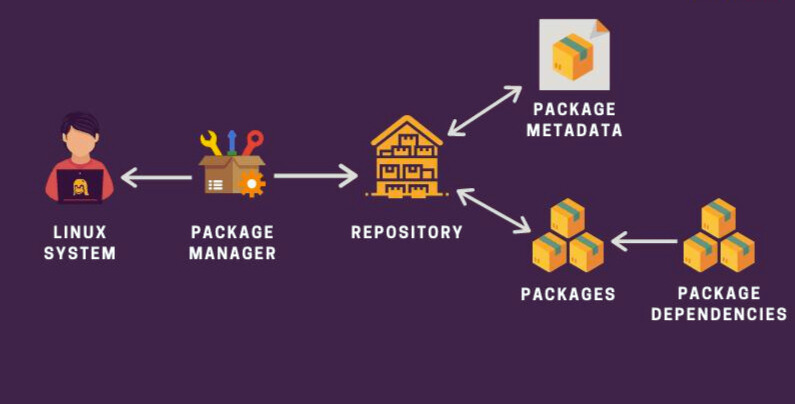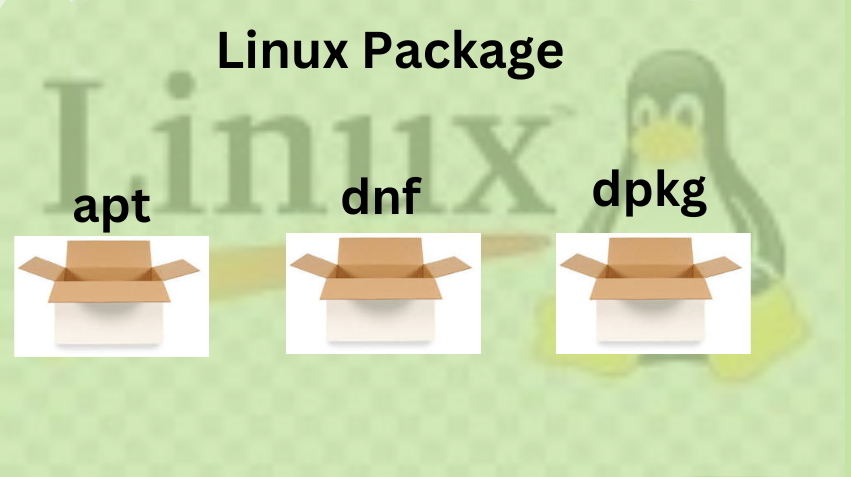Day 7 - Unveiling Package Managers and System Control with systemctl
 priyadarshi ranjan
priyadarshi ranjan
What is a Package Manager in Linux?

A package manager in Linux is like an app store assistant. It helps you install, update, and remove software on your computer easily. This tool takes care of all the complex tasks involved in managing software, making sure everything runs smoothly.
What is a Package?

A package is like a gift box that contains all the things needed to install and run a software program. It includes the program itself, as well as any additional files and settings it needs to work properly.
Common Package Manager Tools
Different Linux distributions use different package manager tools. Some of the most popular ones are:
APT (Advanced Packaging Tool): Used in Debian-based systems like Ubuntu.
YUM (Yellowdog Updater Modified) and DNF (Dandified YUM): Used in Red Hat-based systems like Fedora and CentOS.
Zypper: Used in openSUSE.
Pacman: Used in Arch Linux.
These tools make it easy to manage software packages on your system.
Advanced Packaging Tool (APT)
APT is a powerful tool used in Debian and Ubuntu-based distributions. It makes installing, updating, and removing software packages simple. For example, to install the Telnet client, you can use:
sudo apt install telnet
Various Packaging Formats in Linux
Different Linux distributions use different packaging formats:
.deb: Used by Debian and Ubuntu.
.rpm: Used by Red Hat, Fedora, and CentOS.
.tar.gz: A compressed format often used for source code.
AppImage, Snap, and Flatpak: Formats designed for cross-distribution compatibility.
Each format has its own way of handling software installation and management.
Managing System Services with systemctl
systemctl is a command-line tool used to manage system services in Linux. It works with systemd, the system and service manager. Here are some key commands:
Start a service:
sudo systemctl start service_nameStop a service:
sudo systemctl stop service_nameRestart a service:
sudo systemctl restart service_nameEnable a service at boot:
sudo systemctl enable service_nameDisable a service:
sudo systemctl disable service_nameCheck the status of a service:
sudo systemctl status service_name
For instance, to start the Apache web server, you would use:
sudo systemctl start apache2
Managing Services with service
The service command provides a simpler way to manage services on systems using SysVinit. Although it’s less common in modern systems, it's still useful to know:
Start a service:
sudo service service_name startStop a service:
sudo service service_name stopRestart a service:
sudo service service_name restartCheck the status of a service:
sudo service service_name status
For example, to start the MySQL service, you might use:
sudo service mysql start
Practical Examples with APT
Install a Package
To install a package using APT, like Telnet:
sudo apt install telnet
Remove a Package
To remove a package but keep its configuration files, such as Apache:
sudo apt remove apache2
Completely Remove a Package
To remove a package along with its configuration files, such as Nginx:
sudo apt purge nginx
Remove Leftover Dependencies
To clean up packages that are no longer needed:
sudo apt autoremove
Update Package List
To fetch the latest package lists from the repositories:
sudo apt update -y
Upgrade All Packages
To upgrade all packages to their latest versions:
sudo apt upgrade -y
Upgrade a Specific Package
To upgrade a specific package, such as Apache:
sudo apt upgrade apache2
Conclusion
Understanding package managers and system control tools is essential for effective Linux system administration. Package managers like APT simplify software installation and maintenance, while tools like systemctl and service provide powerful control over system services. Mastering these tools will enhance your efficiency in managing Linux systems and make your DevOps journey smoother. Keep learning and exploring!
Connect and Follow Me on Socials:
Subscribe to my newsletter
Read articles from priyadarshi ranjan directly inside your inbox. Subscribe to the newsletter, and don't miss out.
Written by

priyadarshi ranjan
priyadarshi ranjan
Greetings! 👋 I'm Priyadarshi Ranjan, a dedicated DevOps Engineer embarking on an enriching journey. Join me as I delve into the dynamic realms of cloud computing and DevOps through insightful blogs and updates. 🛠️ My focus? Harnessing AWS services, optimizing CI/CD pipelines, and mastering infrastructure as code. Whether you're peers, interns, or curious learners, let's thrive together in the vibrant DevOps ecosystem. 🌐 Connect with me for engaging discussions, shared insights, and mutual growth opportunities. Let's embrace the learning curve and excel in the dynamic realm of AWS and DevOps technology!